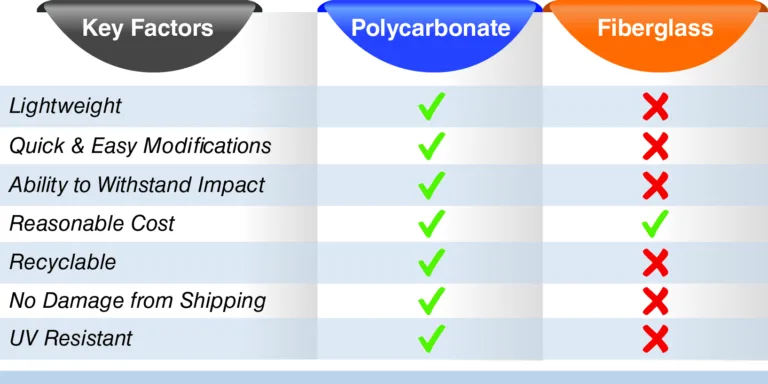Polycarbonate and fiberglass are two of the most commonly used materials for industrial enclosures. While fiberglass has long been considered the standard for its low cost and versatility, it is no match for the newer and stronger material on the scene – polycarbonate.
Overlooking the advantages of polycarbonate could be a costly mistake for outdoor and industrial applications. That’s why it’s important to weigh the pros and cons of each material and consider the environment it will reside in, before making a purchase.

The helpful chart below highlights some of the key factors that should be considered.
When it comes to installing enclosures there are a few important factors that should be considered for both the application and the installer.
Polycarbonate enclosures are about 40% lighter than their fiberglass counterparts, making it easier for one person to complete the installation. A lighter enclosure also means less stress on mounting hardware and less costly provisions required for mounting. It also reduces the cost of shipping the enclosure to the desired location.
The safety of the installer is also a benefit of working with polycarbonate. Fiberglass is tricky to drill and requires safety gear such as masks and gloves to protect the technicians. Fiberglass shards are produced when adding modifications in the field which can cause lung and skin irritation.
When it comes to machining and component installation, polycarbonate can easily meet any requirements. Integra modifies almost every enclosure ordered with precise CNC machining to meet the customers’ needs. Drilling holes in the field is also easily accomplished will none of the health and safety concerns that fiberglass poses. Polycarbonate cuts like butter and leaves behind small curls of plastic that can easily be swept up.
On the other hand fiberglass is harsh on tools, dulling drill bits and leaving sharp, unsightly edges. Many manufacturers will leave the modifications to the customer, due to it being more of a hassle than the service is worth.